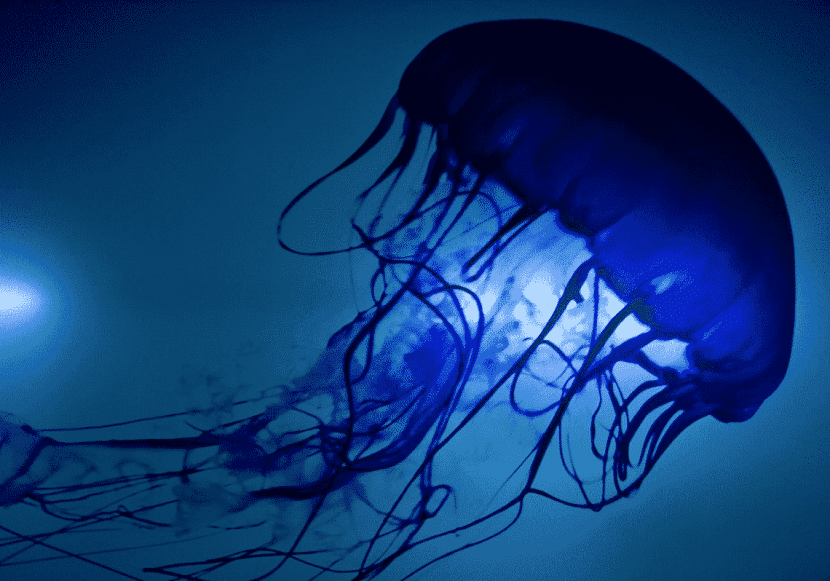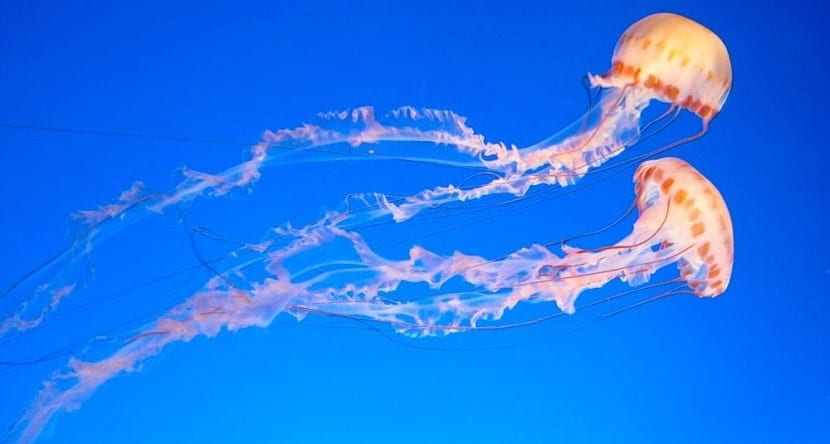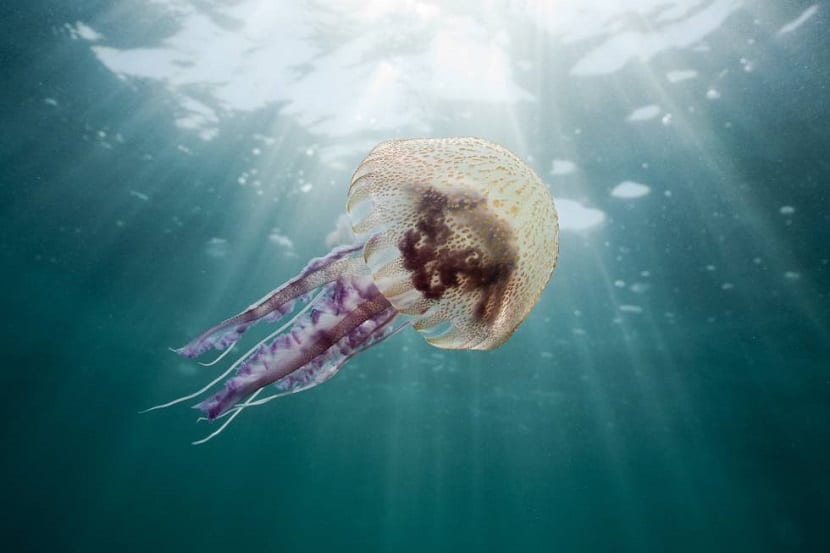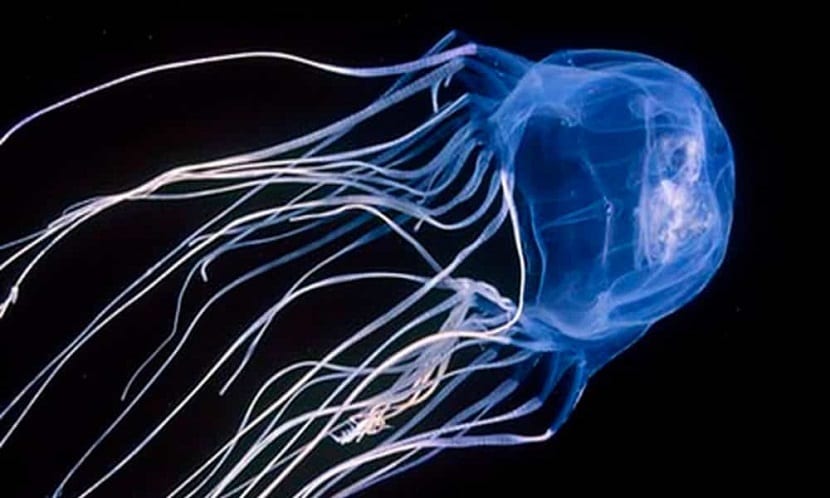
All the sea jellyfish They are one of the most primitive animals that exist. They have been on Earth for more than 600 million years and are classified by science as the most complex primitive animals that exist. It is difficult to think what these animals can eat a priori, since most of their body is made up of water.
In this article we are going to know in depth the sea jellyfish as well as many data that will surely impress you enough to know. Do you want to discover the fascinating world of these very primitive animals? Read on to learn more.
What are sea jellyfish

The first thing we must define is what a sea jellyfish is. It is an invertebrate known as aguaviva, since its composition is mostly water. It is as if the water takes life to form these peculiar organisms. They do not have any type of exoskeleton to protect themselves against predators, as is the case with other marine animals, but use their venom as defense and attack.
Their habitat belongs to the entire extension of the seas and oceans, since they have been able to adapt, throughout evolution, to all kinds of environments and marine conditions. One of the reasons we sometimes find jellyfish near the coast is because they have to get a little closer to start their reproductive cycle.
Most of these organisms live in the pelagic zone (See pelagic and benthic marine organisms). This level is the most extensive in the entire ocean and is the one that is more or less 200 meters deep.
General description

Jellyfish have a morphology that depends entirely on the species we are treating. There may be different species with different behavior under water. The common point that all jellyfish have is its bell shape with an unmistakable gelatinous texture. Most of these species are translucent in color so that you can see the inside of the animal without even having to open it.
The study of jellyfish is something surprising because, out of the ordinary, when its interior is analyzed it can be observed that it does not have organs that, for us, would be vital. For instance, these animals have no heart, brain or lungs. Although the evolution of jellyfish has not gone very far, its development and complexity has allowed it to stay alive and spread for thousands of years.
Although it does not have organs that would be irreplaceable for us, it is a fairly strong and powerful organism that many others fear. When other marine animals judge jellyfish by their appearance, they can run into great danger in front of them. And it is that these animals have a deadly poison for many species. The only organ that can be observed if we analyze the inside of a jellyfish is the stomach. It is what you need to be able to metabolize all the food you eat to convert it into nutrients.
Jellyfish venom can be so deadly that is capable of killing a human being in a matter of minutes. Also depending on the species with which we are dealing and the way in which we go to medical attention, life may or may not be saved.
The characteristic poison

One of the main characteristics that sea jellyfish have is their venom. It is a very powerful toxic substance that has stinging cells called cnidocytes. These cells are the ones that make all the species that belong to the Cnidarians phylum characteristic. The poison he uses it to capture his prey and with the stomach that can be seen with the naked eye, it ingests them and transforms them into nutrients.
The main action of this deadly poison is to paralyze the prey so that it can eat it. To completely paralyze a human being, the concentration of the poison that it injects into our body has to be much higher than that of a marine animal. Our size and surface area is larger than that of a fish, so you will need to triple or more the amount of venom you use to leave a human being completely paralyzed.
However, there are many dangers that we face when sea jellyfish swim near the coast in their reproductive period. Every year people die from jellyfish stings and thousands more of them get wounded and with hives. There are few jellyfish that can kill us completely, but it is necessary to prevent every possible condition.
Life and reproductive cycle

Most species of jellyfish have a somewhat strange life cycle. They use a sexual method a little different from what we are used to seeing. Uniting the two gametes (male and female) is how a new life form called a polyp is created. This polyp remains attached to the substrate of the ocean floor and develops until it ends its cycle and give rise to many more jellyfish hatchlings.
That is, from just one cross between jellyfish, they can reproduce and give hundreds of them. This is one of the reasons why, apart from its ferocity when attacking its prey with deadly poison, it is able to survive and continue to be one of the species present throughout the world for more than 600 today. millions of years.
It is surprising to know that these animals They are used in the pharmacological and even aesthetic industries and we can find it in many products that are consumed daily.
As is usual in all these surprising animal themes, the human being, with his technology, is able to "dominate" and take advantage of his body for his benefit. However, you have to be very careful when there is a blue flag on the beach. This means that the concentration of jellyfish near the coast is high and that you have to be careful and not bathe. In this way many misfortunes will be avoided.